Forums:
No spring Irisses here yet....I'll remedy that ;) In flower here now and during the last couple of weeks:
Iris 'Gordon'
Iris hyrcana
Iris 'Katherine Hodgkin'
Iris 'George'
Iris 'Rhapsody'
Iris 'Blue Ice'
Iris histrioides 'Angel's Tears'
Iris 'Pixie'
Iris 'Ruby'
and Iris 'Alida'

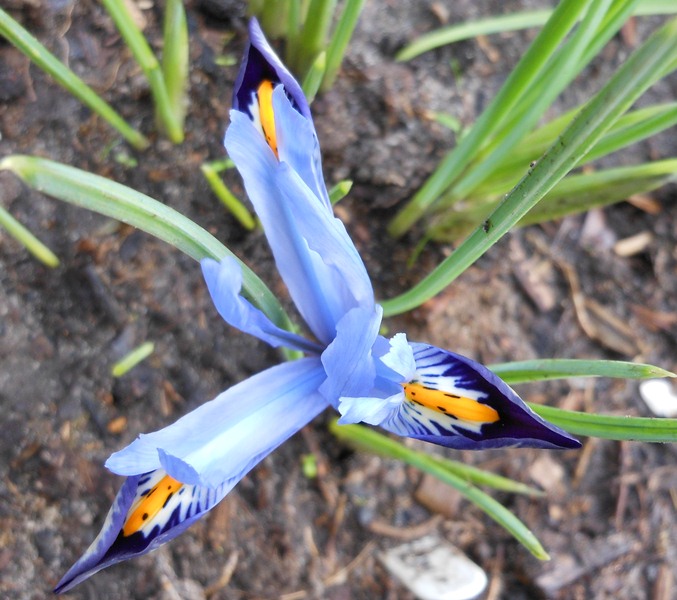
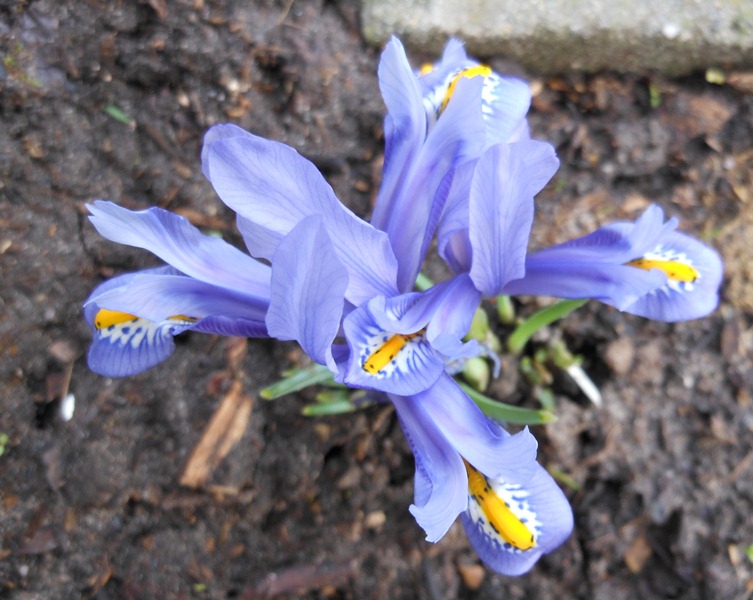
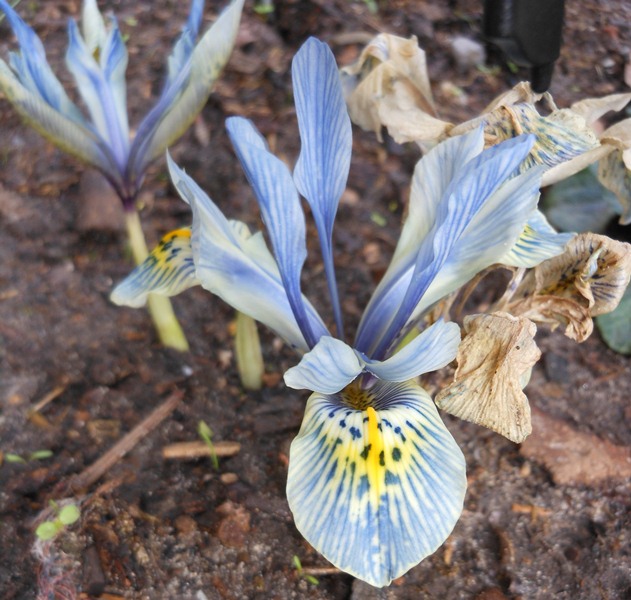
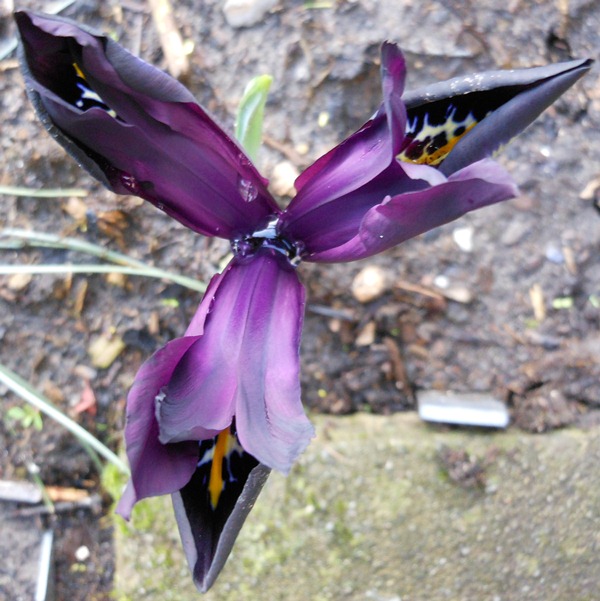
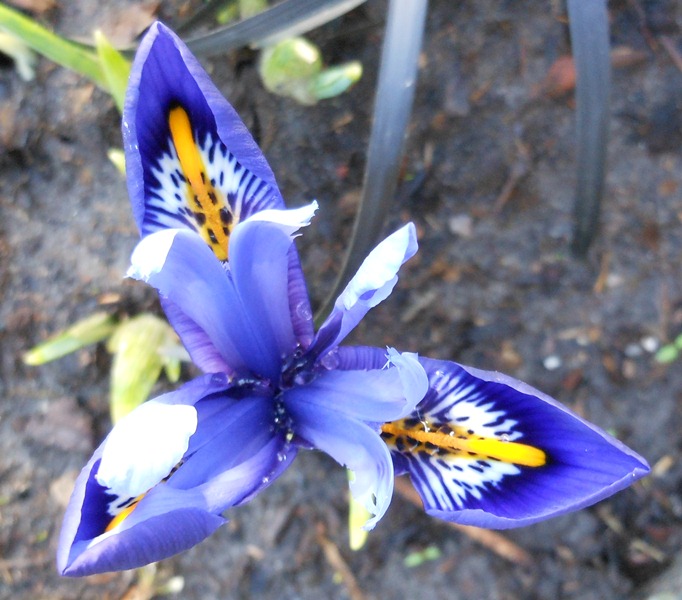
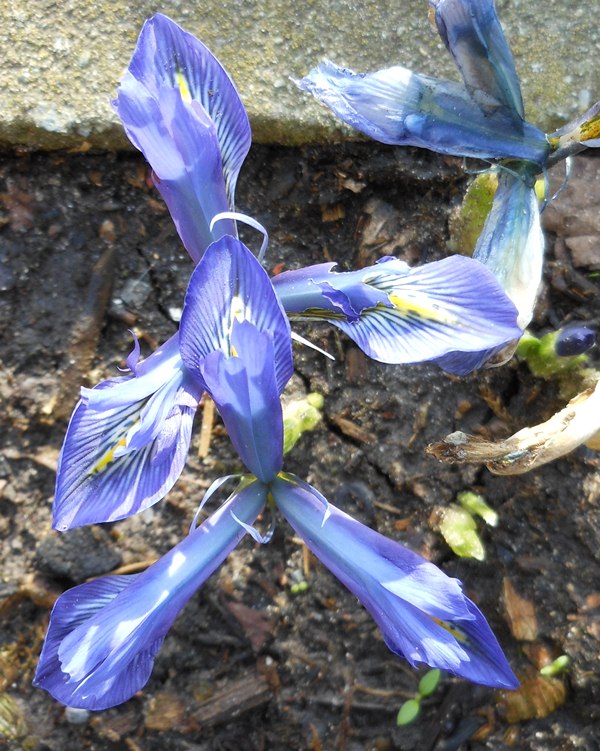
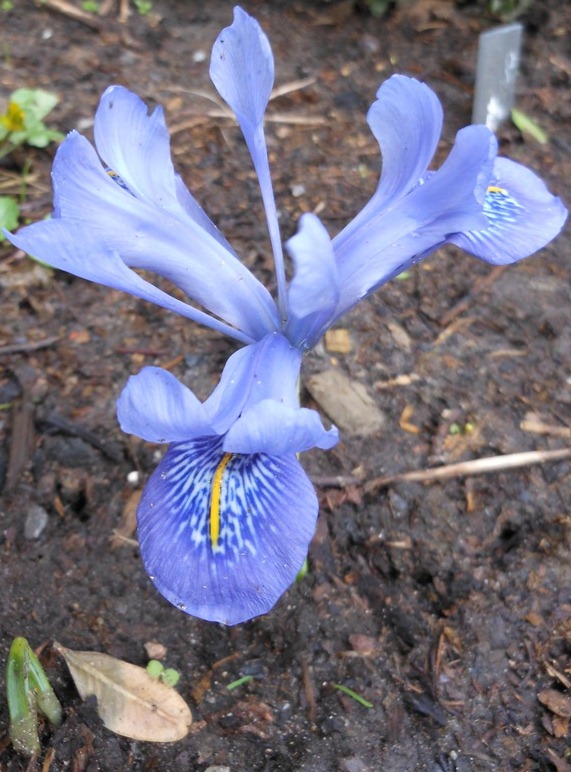
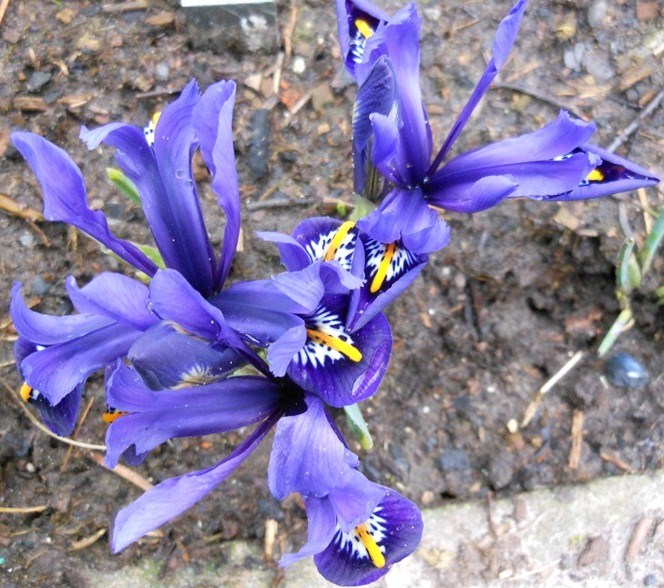
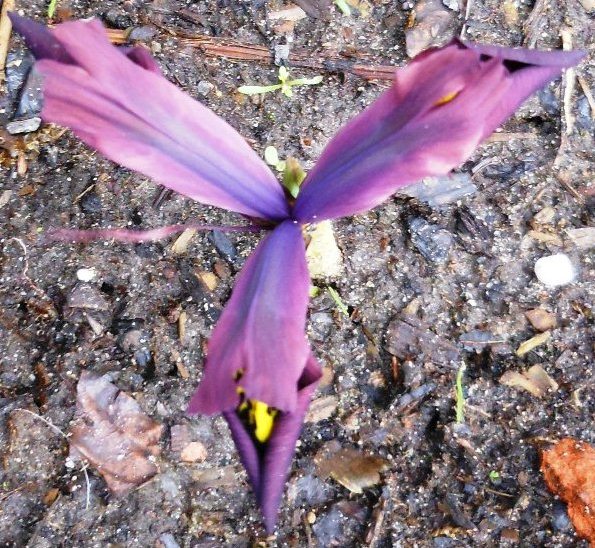
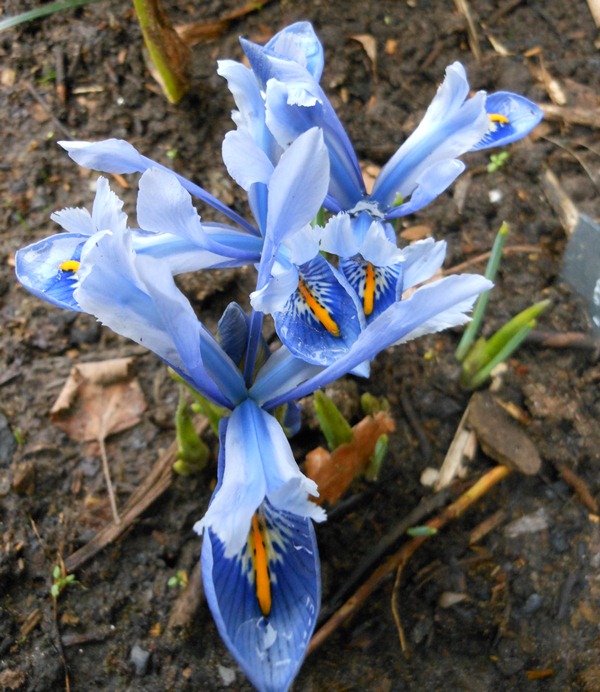
Comments
Trond Hoy
Re: Iris 2012
Wed, 02/01/2012 - 12:48pmVery tempting Wim! I have only Katherine H but it is still down in the soil. Too cold now. I am planning to plant more spring Irises next autumn.
BTW, does anybody know the name of this one from last late spring?
Fermi de Sousa
Re: Iris 2012
Wed, 02/01/2012 - 7:04pmI'm not sure, Trond. It appears to be in the "siberian group" - maybe Iris setosa?
cheers
fermi
WimB (not verified)
Re: Iris 2012
Thu, 02/02/2012 - 12:14amI think Fermi is right, Trond!
Iris setosa subsp. canadensis
Richard T. Rodich
Re: Iris 2012
Thu, 02/02/2012 - 8:05amI've been kind of waiting for Todd Boland to weigh in here. He is the best expert we have here, I think, on this beardless iris.
I tentatively agree.
Iris setosa subsp. canadensis is a synonym for Iris hookeri.
Trond Hoy
Re: Iris 2012
Thu, 02/02/2012 - 8:47amThanks all of you! I had quite forgotten the plant till I noticed the blue flowers among the weeds! (I did a little weeding afterwards)
WimB (not verified)
Re: Iris 2012
Mon, 02/27/2012 - 3:06amTwo more reticulate Irisses photographed today:
Iris 'Edward'
Iris 'Frank Elder'
Todd Boland
Re: Iris 2012
Mon, 02/27/2012 - 7:37amYes, I'll confirm Trond's iris as Iris hookeri (aka I. setosa ssp. canadensis)...that Iris is endemic to the Gulf of St. Lawrence, eastern North America, with the largest population located in Newfoundland. Didn't I send you seed of this Trond? I thought I sent seeds of a lavender, very dwarf form.
Trond Hoy
Re: Iris 2012
Mon, 02/27/2012 - 11:36amThanks Todd! Yes in fact you sent me two different forms and I have two huge potfulls of seedlings from last year which already start sprouting outside. They didn't flower as yearlings though! Maybe this year?
The pictured plant is probably something I've bought or got from somewhere - suddenly I noticed the flowers last spring at my summerhouse :-)
Michael J Campbell (not verified)
Re: Iris 2012
Thu, 03/08/2012 - 11:09amIris tuberosa ( Hermodactylus tuberosus)
cohan (not verified)
Re: Iris 2012
Thu, 03/08/2012 - 4:41pmAll nice ones- great range of colours, Wim! - I think I like all Irises- except some of the monstrous ruffly hybrids! :o
Really love to see good patches of retics :) Need to get some more- I only planted one little batch several years ago, and last year they did not do much, may need a different site... (Muscari is increasing beautifully in that bed!)
I have I setosa canadensis small seedlings from seed from Kristl (Nova Scotia population) from a couple of years ago, have to plant them out this year!
Richard T. Rodich
Re: Iris 2012
Thu, 03/08/2012 - 5:13pmSo many really nice iris, Wim!
Iris setosa ssp. canadensis (now Iris hookeri) was the first species iris I ever grew. It came form a Chapter plant sale,. As an introduction to species iris, I think it is the very best one for a newbie grower. It is easy, adaptable to different climates, floriferous, colorful, yet intricate and not overpowering.
Iris hookeri nana
deesen (not verified)
Re: Iris 2012
Sun, 03/18/2012 - 12:02pmA purple form of Iris attica
Mark McDonough
Re: Iris 2012
Sun, 03/18/2012 - 12:59pmDavid, good to see such a deep color form, but I'm not sure your plant is well, both the foliage and flower give the impression of a possible virus.
deesen (not verified)
Re: Iris 2012
Mon, 03/19/2012 - 11:40amYou're spot on Mark and it's also been confirmed on the SRGC Forum. This one is virused too-Iris lutescens alba-and both plants are now in the bin :(
bulborum (not verified)
Re: Iris 2012
Mon, 03/19/2012 - 1:50pmPity David
couldn't you keep the plant a little longer to save seeds ??
I am searching Iris lutescens alba sins a few years
Roland
Tom Waters (not verified)
Re: Iris 2012
Wed, 03/21/2012 - 5:29pm'Katherine Hodgkin' here in Cuyamunge, New Mexico, today.
Richard T. Rodich
Re: Iris 2012
Wed, 03/21/2012 - 8:06pmFor a minute there, Tom, I thought that was very late for New Mexico; then I saw you were zone 5/6 - no wonder. Katherine Hodgkin is one of my favorites.
Iris suaveolens - an old patch and a 3 year "seedling". No new growth, just evergreen foliage.
Tom Waters (not verified)
Re: Iris 2012
Mon, 03/26/2012 - 12:43pmFirst bearded iris of the season: Iris pumila aequiloba
Richard T. Rodich
Re: Iris 2012
Mon, 03/26/2012 - 2:47pmNice, Tom.
Iris suaveolens is usually the first to open in my garden.
Lori S. (not verified)
Re: Iris 2012
Mon, 03/26/2012 - 7:15pmLooking good, Tom.
Iris suaveolens is the first to bloom here too, Rick.
Richard T. Rodich
Re: Iris 2012
Tue, 04/17/2012 - 7:24pmIris attica
bulborum (not verified)
Re: Iris 2012
Wed, 04/18/2012 - 12:11amAAAAAHHHHHHHHH
my first flower buts from Iris luteolum where eaten by slugs
I spoiled them today with some mesurol
and hope to see later some flowers (and seeds)
Roland
externmed (not verified)
Re: Iris 2012
Wed, 04/18/2012 - 7:28pmJust a minor aside. The NARGS gallery has the same plant showing for Iris suaveolens and Iris attica.
(but the angle of the photo is a little differrent) ;-)
It's blooming here in Massachusetts USA, but initally it was difficult to distinguish the greenish yellow flowers from the leaves. (must have bought it from a catalog without photos, but it is a sturdy grower in the sand bed)
Charles
Lori S. (not verified)
Re: Iris 2012
Thu, 04/19/2012 - 10:50amYes, it certainly does look like it, Charles, as the backgrounds appear to the same in the two photos.
Todd, could you please look into this?
LucS (not verified)
Re: Iris 2012
Thu, 04/19/2012 - 11:20amI wonder why nobody is posting any onco-iris.
Here are a few to start with:
Iris paradoxa - a collection from Armenia
Iris acutiloba ssp. acutiloba
Iris paradoxa - a collection from Lake Sevan, Armenia
Richard T. Rodich
Re: Iris 2012
Thu, 04/19/2012 - 2:50pmThanks for remedying that, Luc, by posting. They are indeed gems. Even in my cold climate, my mind wants to grow regelias or perhaps onco-regelia crosses, but I haven't built up the courage yet. They are all stunning, in my opinion.
Richard T. Rodich
Re: Iris 2012
Thu, 04/19/2012 - 4:27pmWalking the garden today, I seemed to have caught Iris attica in a most beautiful stage of senescence.
In the first photo: left flower just opened, right flower one day old.
In the second photo: Three days old. 8)
WimB (not verified)
Re: Iris 2012
Sun, 04/22/2012 - 10:10amLuc, don't hesitate tow show more of your wonderful Onco's over here too, they are sublime!
Two SDB Irisses in flower here now:
Iris 'Rabbit's Foot'
and Iris 'Well Suited'
WimB (not verified)
Re: Iris 2012
Sun, 04/29/2012 - 6:50amTwo more SDB's in flower:
A white one with no name
Another with no name
and Iris 'Sky Blue'
bulborum (not verified)
Re: Iris 2012
Sun, 04/29/2012 - 6:58amWho grows Iris lutescens White form
and can spare a few seeds
Roland
Michael J Campbell (not verified)
Re: Iris 2012
Sun, 04/29/2012 - 7:28amWim,will you let me know if you get a name for that yellow Iris,No 2 picture, as I also have it with a no name label.
Cheers.
Michael Peden
Re: Iris 2012
Fri, 05/04/2012 - 7:10amMay is little Iris time here. I got 'Candy fluff' and 'Sleepy Time' at Poker Hill in Vermont. Well before that I was growing the "dwarf purple" one which may have come from Addison Gardens. Zdenek Zvolanek liked the "dwarf yellow" one so much, that when he saw it in a friend's Canadian garden, he begged a piece. I don't know if he still refers to it as Michael's Iris. Zdenek? I can add just a little more to its story: I got it at a local Master Gardener's plant swap in the earliest days of my rock gardening, if not before. Good, even great plants can turn up anywhere! I never studied it, but there is, or was some fellow by the name Hermit Meddler who offered a stunning array of these little Iris.
cohan (not verified)
Re: Iris 2012
Sun, 05/06/2012 - 5:49pmEvery one of them is nice- Sleepytime has an especially nice colour- and nice to see the spreading patches too..
LucS (not verified)
Re: Iris 2012
Mon, 05/21/2012 - 1:41pmOne of the last onco's in flower : iris polakii from Iran/Azerbaijan
Lori S. (not verified)
Re: Iris 2012
Mon, 05/21/2012 - 8:39pmWhat a beauty, Luc!
deesen (not verified)
Re: Iris 2012
Thu, 05/24/2012 - 12:21pmIris prismatica I think? Flowering for the first time and grown from SRGC Seed Ex. seed sown September 2009.
cohan (not verified)
Re: Iris 2012
Thu, 05/24/2012 - 11:39pmLuc- i remember some of your great oncos- they really can't be beat for colours!
David- that seems quite quick flowering, nice work!
deesen (not verified)
Re: Iris 2012
Fri, 05/25/2012 - 12:14pmLis, I posted the same image on the SRGC Forum and the general view was that it wasn't Iirs prismatica (it didn't check out with the description Brian Mathew gives in "The Iris") more likely to be a Pacific Coast hybrid. Never mind, it's quite pretty and I shall keep it.
Michael J Campbell (not verified)
Re: Iris 2012
Fri, 05/25/2012 - 1:53pmIris germanica Davy Jones
Richard T. Rodich
Re: Iris 2012
Fri, 05/25/2012 - 7:17pmIris reichenbachii
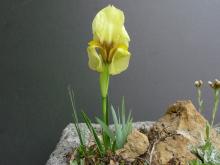
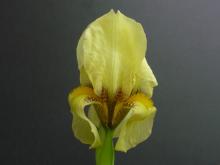
Iris graminea flowers hide in the foliage. But the foliage is so graceful, deep green, durable, insect free and non-floppy that I have wondered why these characteristics have not been prized by breeders.
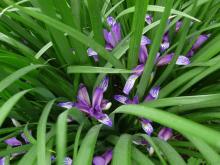
A seedling from Iris setosa 'Tourist'.
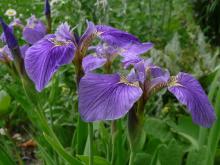
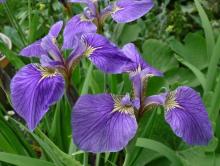
Iris sintenisii var. brandzae amidst Corydalis cheilanthifolia.
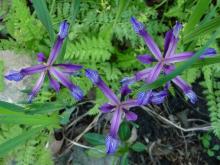
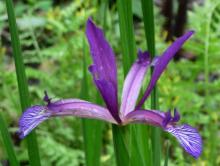
LucS (not verified)
Re: Iris 2012
Sun, 05/27/2012 - 1:13amA late flowerer from Armenia
Iris acutiloba ssp. lineolata
cohan (not verified)
Re: Iris 2012
Sun, 05/27/2012 - 4:43pmFun to see the significant variations on what is still a clear Iris theme! I like them all :)
Luc- wow!
Richard T. Rodich
Re: Iris 2012
Sun, 05/27/2012 - 7:13pmTruly breathtaking, Luc. Especially the last iris acutiloba.
:o :o :o
Richard T. Rodich
Re: Iris 2012
Tue, 05/29/2012 - 8:56pmTypically with rather floppy standards, this is Iris sanguinea.
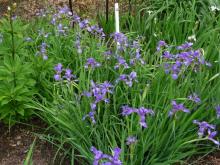
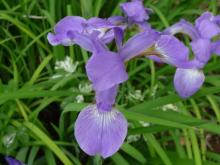
And a nice powder blue form that appeared in my seed grown collection:
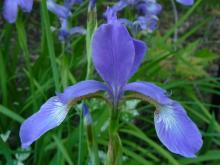
bulborum (not verified)
Re: Iris 2012
Wed, 05/30/2012 - 1:55amNice ones Rick
Small typo
must be Iris sanguinea
Roland
deesen (not verified)
Re: Iris 2012
Wed, 05/30/2012 - 1:56amI do love the Iris season, here are some of mine:-
Two I. sibirica cultivars, the first 'Perry's Blue' (although there could be a label walkabout involved here!) the second 'Sparkling Rose'
Iris pseudacorus-this grown from Exchange seed (labelled Iris tectorum!) that thrives, surprisingly in one of the driest parts of my garden. Incidentally I have another pseudocorus elsewhere in the garden also grown from mislabelled seed.
Also seed grown-Iris graminea
Richard T. Rodich
Re: Iris 2012
Wed, 05/30/2012 - 5:38amI could have sworn that "i" was in there, Roland.
Fixed. Thanks. :)
deesen (not verified)
Re: Iris 2012
Thu, 05/31/2012 - 11:30amA few more Iris sibirica pictures:-
Iris sibirica 'Chartreuse Beauty'
Iris sibirica 'Outset'
Iris sibirica seedling-grown from seed scrounged (with permission) from a National Trust garden.
Toole (not verified)
Re: Iris 2012
Sat, 07/14/2012 - 3:05amIris 'george'
I understand it is a hybrid of Iris histrioides and Iris reticulata.
Still only one healthy bulb after many many years :'( --just wish it showed some hybrid vigour --at least for me.
I'll take another shot when it's fully out.
Cheers Dave
bulborum (not verified)
Re: Iris 2012
Sat, 07/14/2012 - 3:15amMaybe it need a little more fertiliser
Here they multiply well
Roland
Pages